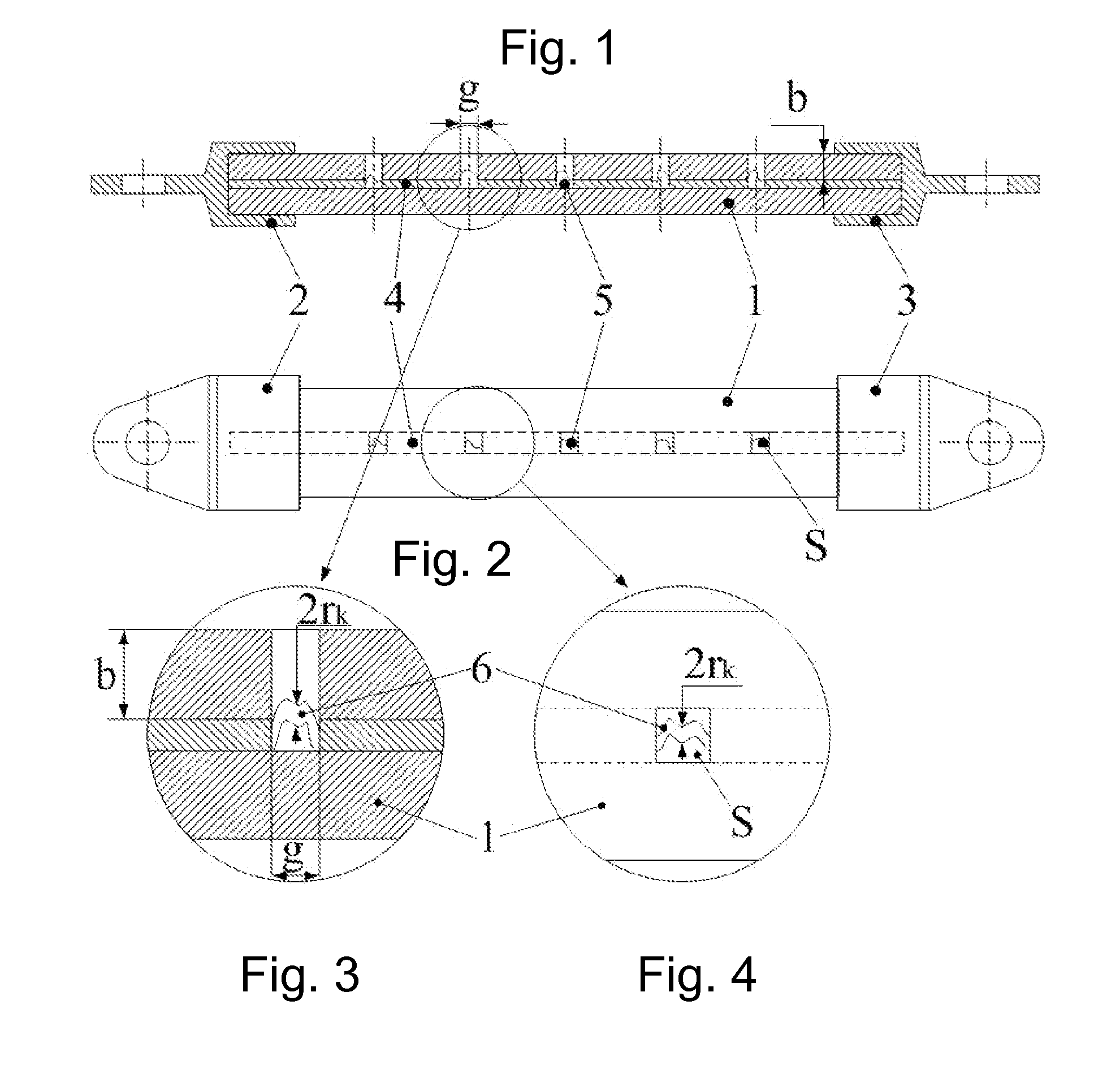Lightning arrester and a power transmission line provided with such an arrester
a technology of power transmission line and arrester, which is applied in the installation of lighting conductors, emergency protective arrangements for limiting excess voltage/current, and arrangements responsive to excess voltage, etc., can solve the problems of increasing maintenance costs, and affecting the operation of arresters. , to achieve the effect of low manufacturing and maintenance costs, low flashover voltage, and high reliability
- Summary
- Abstract
- Description
- Claims
- Application Information
AI Technical Summary
Benefits of technology
Problems solved by technology
Method used
Image
Examples
Embodiment Construction
[0044]With reference to FIGS. 1 to 4, an arrester according to the invention comprises an elongated flat insulating body 1 made of a solid dielectric, for example, of polyethylene. The first and the second main electrodes 2, 3 are respectively installed on both ends of the insulating body 1. Due to such arrangement, both main electrodes are mechanically coupled to the insulating body. Inside the insulating body 1 m intermediate electrodes 4 are located. A minimal value of m equals two, while an optimal number of the intermediate electrodes is selected depending on their particular configuration, a precalculated overvoltage and other conditions of their functioning. The arrester embodiment shown in FIGS. 1 to 4 comprises 5 intermediate electrodes 4 configured as rectangular plates mutually displaced along the longitudinal axis of the arrester (this axis connects main electrodes 2, 3). A sparkover air gap is formed between each pair of adjacent intermediate electrodes 4, this gap dete...
PUM
 Login to View More
Login to View More Abstract
Description
Claims
Application Information
 Login to View More
Login to View More - R&D
- Intellectual Property
- Life Sciences
- Materials
- Tech Scout
- Unparalleled Data Quality
- Higher Quality Content
- 60% Fewer Hallucinations
Browse by: Latest US Patents, China's latest patents, Technical Efficacy Thesaurus, Application Domain, Technology Topic, Popular Technical Reports.
© 2025 PatSnap. All rights reserved.Legal|Privacy policy|Modern Slavery Act Transparency Statement|Sitemap|About US| Contact US: help@patsnap.com



